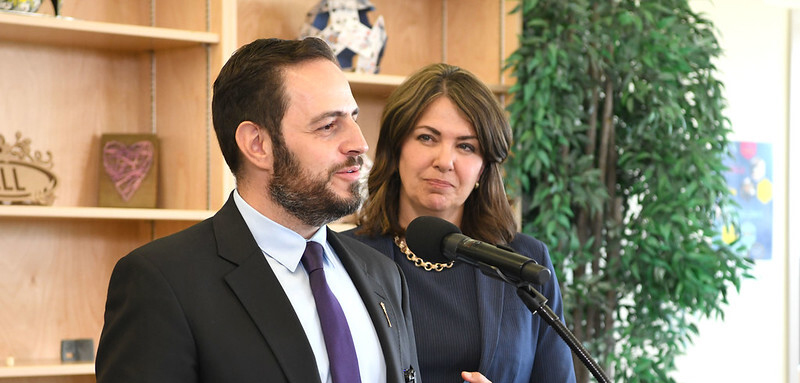School’s back in — with thousands more students in Alberta’s classrooms. Recognizing the pressures caused by increasing enrolment, the Alberta government announced a one-time funding injection for school authorities.
On July 23, Education Minister Demetrios Nicolaides and Premier Danielle Smith announced $215 million in additional funding to help school authorities support students. Premier Smith said that schools are facing real challenges due to not only historic enrolment growth in the province — particularly in metropolitan areas — but also due to rising operational costs.
“Unfortunately, these challenges often fall on our educators and school authorities who are committed to providing every student with the world-class education that they deserve,” Smith said.
Of the $215 million, $125 million is earmarked for operational costs, while the remainder is for the construction or redeployment of modular classrooms.
“The additional funding of $215 million will create 3,750 new student spaces in our fastest growing communities while also helping school authorities put more money into the classroom,” said Nicolaides.
The $125 million allocated for operational costs will be provided over the next three years to school authorities based on the most current enrolment projections. All public, separate, francophone, charter, accredited-funded independent schools and early childhood services operators in Alberta are eligible to receive a share of this funding, with each school authority given discretion to deploy their allotted funds as appropriate. The funding could be spent on more teachers or other staff in schools, on programming and resources, or on other operational costs.
“School board trustees will work closely with school administration to help determine how those resources should be deployed to best serve the students that they have in front of them,” said Alberta School Boards Association President Marilyn Dennis.
Further, with school construction lagging behind student numbers in metropolitan areas, the government also has committed $90 million to building up to 100 new modular classrooms and relocating up to 50 units this year, hopefully by the end of December. The modular classrooms will be constructed or redistributed in Edmonton and the Calgary metropolitan area, which are seeing the most enrolment growth.
The newly announced funding has been welcomed by school boards, including the Calgary Board of Education (CBE), which is expecting an additional 8,000 students this fall.
“Escalating enrolment means many CBE schools are reaching capacity,” said Patricia Bolger, CBE chair, in response to the announcement. “Receiving additional modular classrooms will help address enrolment pressures, particularly in schools that have experienced significant growth in the past few years.”
Stakeholders also acknowledged the timeliness of the mid-summer announcement, as it allowed school authorities to better plan for the year ahead. Demetrios said that the government would not typically announce additional funds outside of the budget cycle, but given the increasing enrolment, action needed to be taken.
“Continued growth in the system beyond original projections along with rising cost pressures requires action now so that our school authorities can plan for the upcoming school year,” Demetrios said.
Like other stakeholders, the Alberta Teachers’ Association (ATA) welcomed the funding announcement, glad to see the addition of modular classrooms to address the crucial need for more learning spaces and funding to provide student support. At the same time, concerns about education funding remain, according to ATA president Jason Schilling.
“The one thing that government is failing to recognize, beyond growth pressures, is that despite this one-time infusion of money, Alberta is still the least funded education system in Canada,” said Schilling.
Schilling hopes that the government will continue its efforts to give students the education they deserve, stating that the ATA will continue to advocate on behalf of Alberta’s teachers and students.
“There are systemic issues like class size, classroom composition issues and a lack of resources for our students that need to be addressed by government,” Schilling said. “This band-aid approach to funding will not serve our students’ best interests.” ❚



